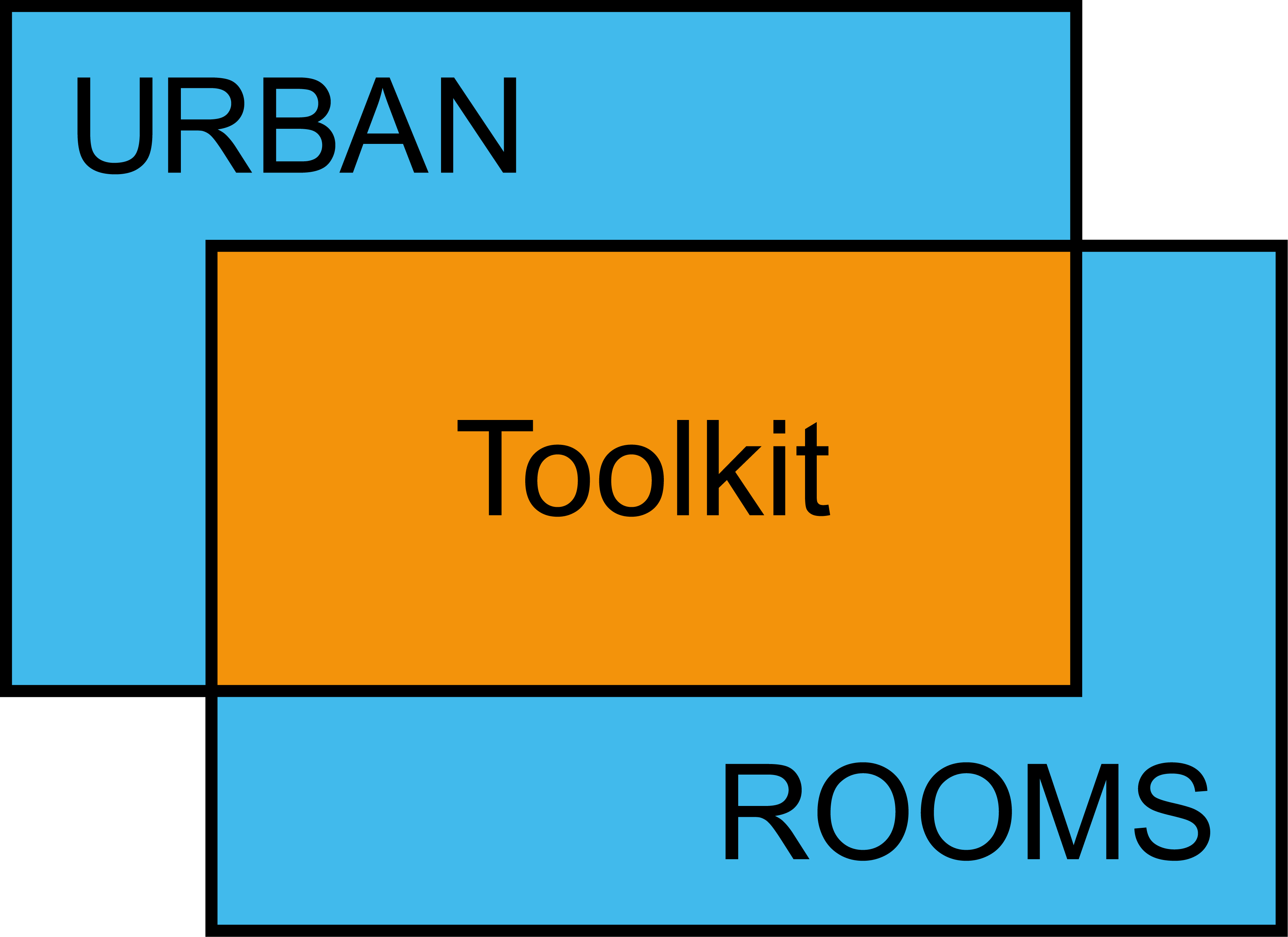


Group: Models
Method: Digital Models
Description:
Digital models can offer an alternative to the physical modelling methods described previously. These can be off-the-shelf or bespoke digital models that visualise in 3D the topography, buildings and infrastructure of a place. These digital models can be accessed via immersive technologies such as AR (augmented reality) and VR (virtual reality), or via a more conventional display screen.
Some Urban Rooms have used established platforms such as VU City and Digital Urban that offer the opportunity to test new developments in the context of an existing city digital model. Other Urban Rooms have created their own digital city models, often in collaboration with local Universities.
Another type of digital model is of the Urban Room itself - giving remote visitors an opportunity to enter a simulation of the space and explore the exhibits within it.
Purpose of Method:
Digital models offer a quick and engaging way to visualise the development of design ideas. They often allow options to be tested in digital city space and designs to be rapidly iterated. A digital model can also take its place amongst the physical exhibits in the Urban Room, enhancing the activities offered and creating a rich hybrid experience.
A digital Urban Room model communicates the existence of the physical space more widely and offers and type of Urban Room experience for those who cannot access the Urban Room itself or after the Urban Room has closed.
Suitable Audience:
Similar to other digital methods, digital models can enable wider participation, beyond the physical space of the UR, although not everyone has the capacity to access this sophisticated data online.

SpACE Virtual Room
Credit: SpACE Urban Room, Edinburgh
Space for Architecture, Carbon and Environment
SpACE (Space for Architecture, Carbon and Environment) held discussions and events that addressed the climate emergency. Following its completion after a 5-week period the exhibition at SpACE was replicated digitally, creating a ‘Virtual Engage’ room on their website. Devised by Arup, the virtual room visualises the physical space, and allows users to navigate the room, clicking on exhibition boards to reveal information that had been presented at the venue.
Group: Models
Method: Digital Models
Description:
Digital models can offer an alternative to the physical modelling methods described previously. These can be off-the-shelf or bespoke digital models that visualise in 3D the topography, buildings and infrastructure of a place. These digital models can be accessed via immersive technologies such as AR (augmented reality) and VR (virtual reality), or via a more conventional display screen.
Some Urban Rooms have used established platforms such as VU City and Digital Urban that offer the opportunity to test new developments in the context of an existing city digital model. Other Urban Rooms have created their own digital city models, often in collaboration with local Universities.
Another type of digital model is of the Urban Room itself - giving remote visitors an opportunity to enter a simulation of the space and explore the exhibits within it.
Purpose of Method:
Digital models offer a quick and engaging way to visualise the development of design ideas. They often allow options to be tested in digital city space and designs to be rapidly iterated. A digital model can also take its place amongst the physical exhibits in the Urban Room, enhancing the activities offered and creating a rich hybrid experience.
A digital Urban Room model communicates the existence of the physical space more widely and offers and type of Urban Room experience for those who cannot access the Urban Room itself or after the Urban Room has closed.
Suitable Audience:
Similar to other digital methods, digital models can enable wider participation, beyond the physical space of the UR, although not everyone has the capacity to access this sophisticated data online.

SpACE Virtual Room
Credit: SpACE Urban Room, Edinburgh
Space for Architecture, Carbon and Environment
SpACE (Space for Architecture, Carbon and Environment) held discussions and events that addressed the climate emergency. Following its completion after a 5-week period the exhibition at SpACE was replicated digitally, creating a ‘Virtual Engage’ room on their website. Devised by Arup, the virtual room visualises the physical space, and allows users to navigate the room, clicking on exhibition boards to reveal information that had been presented at the venue.
